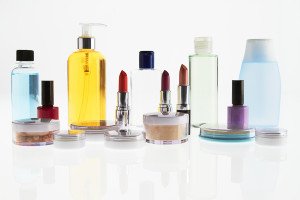Chemicals in popular women’s hair dyes cause cancer
3 min read
(NaturalNews) British scientists are warning that popular hair dyes used by millions of women contain a number of chemicals linked to cancer.
According to Britain’s Daily Mail newspaper, the scientists also say that both home hair coloring kits and dyes used at more expensive hair salons pose a growing potential health risk.
The scientists, who recorded their findings in a respected medical journal recently, say chemicals in permanent hair dyes may react adversely with tobacco smoke and other airborne pollutants “to form one of the most powerful cancer-causing compounds known to man,” the Daily Mail said.
Researchers simply ‘joined the dots’
As more than one-third of women and one in 10 men regularly color their hair, the researchers note it is “imperative” that the risk to their health is adequately measured and recorded.
Not surprisingly, the cosmetics industry is strongly disputing the scientists’ findings, which came from researchers at a Leeds-based company called Green Chemicals, who conducted a review of chemistry surrounding hair dyes.
The scientists said all the information regarding the threat was readily available; all they did, they say, was “joined the dots” to make the cancer link.
In their findings, the researchers identified chemicals called secondary amines, which are found in all permanent hair dyes or are reformed in them. They are able to penetrate the skin and remain in hair for weeks, months or even years after dyes are applied.
Over time, the compounds could react with tobacco smoke, exhaust fumes or other substances to form highly poisonous chemicals known as N-nitrosamines.
Known to cause cancer, these substances have been banned from use in other cosmetics, but the researchers argued that they are still able to be generated through a simple chemical reaction.
In the past, hair dyes have been linked to a host of cancers, including tumors of the breast, bladder, ovaries and the brain, and have been known to play a role in causing leukemia.
Besides the added cancer risk, scientists are concerned that an increasing number of people are becoming allergic to the contents of hair dyes, sometimes developing fatal reactions.
Regulating the industry; however, is likely to prove problematic, if not impossible: British officials estimate the sale of home hair dye kits alone amounts to some ?321 million annually, a figure that is expected to only rise as the population ages.
One of the study’s authors, Prof. David Lewis, who is an expert in the chemical makeup of various dyes, said more research was needed to fully calculate the risk.
“At this stage we can’t be sure of the amount of N-nitrosamines produced or the level of risk these compounds pose but it is clear a potential hazard exists,” he told the paper. In the interest of consumer safety, it is imperative that a thorough and independent investigation is conducted to establish the levels of toxicity of these compounds and the potential risks.
A spokesman for Green Chemicals, which is set to launch its own “ultra-safe” brands of hair dye, said that despite a number of studies on the subject, the dangers posed by hair dye chemicals reacting with airborne elements has either been missed or ignored, until now.
‘Chemical companies have an interest in keeping this under wraps’
Still, manufacturers are insisting the possibility of the chemical reaction has long been known.
Dr. Emma Meredith of the Cosmetic, Toiletry & Perfumery Association, a Britain-based cosmetics advocacy group, said current law bans secondary amines in any form capable of causing such reactions.
Others said cosmetic makers would necessarily benefit if word about the potential cancer dangers of their products don’t get wide play in public.
“Chemical companies have a huge vested interest in keeping this under wraps,” George Hammer, owner of Urban Retreat at Harrods, the world’s largest hair and beauty salon, told the paper.
The scientists published their findings in the journal Materials.
In 2009, the paper revealed that women who use hair dyes more than nine times annually have a 60 percent greater risk of getting blood cancer.
A year later, the European Commission “banned 22 hair dyes which put long-term users at risk of bladder cancer,” the paper reported.
Research Links:
Source: http://www.naturalnews.com/039270_chemicals_hair_dyes_cancer.html#ixzz2M7ZI7yrl






